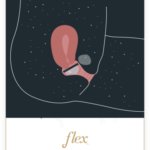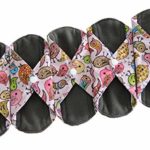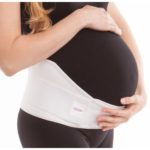Postpartum Pelvic Floor – Perineal Tearing

I first heard of perineal tearing as a teenager when a family member had her first baby. We could not go back to see her right away, my mom softly whispered to me, because she was being stitched up. I thought to myself as I looked around at everyone’s rather solid looking skulls, I guess it makes sense that a woman may have some tearing during childbirth! I learned more of the reality of perineal tearing in my training in pelvic health physical therapy, though at the time, it was still an abstract condition that I had not personally experienced. Now, after having a baby 10 weeks ago, the topic still has some power over me to make me cringe. But I must charge ahead.
Degrees of Perineal Tearing
First, you may not totally know what the perineum is. Here is a super thorough resource on its anatomy. During childbirth, the tendon separating the vaginal opening and the anus, the supporting muscles, and the skin can get torn. This is what we would call perineal tearing.
Tearing is categorized as first-degree, second-degree, third-degree, and fourth-degree. The Mayo Clinic has an awesome slideshow of illustrations here (if you really want to have a mental image of what you’ve gone through!). I will do my best to summarize.
First-degree
First-degree tearing is primarily involving the skin around the vaginal opening. It often heals on its own.
Second-degree
Second-degree tearing involves the skin and the perineal muscles that separate the vagina and anus. Ouch! It usually requires stitches to heal, but can typically be stitched up right in the delivery room.
Third-degree
Third-degree tearing involves the skin, perineal muscles, and the external anal sphincter. This layer of sphincter muscle helps with fecal continence, so sometimes women will have difficulty holding a bowel movement or gas with this degree of tear. Most hospitals also require that a third-degree tear is stitched up in an operating room, which is a good thing! That means that the doctor is more intentionally stitching up these various layers of tissues to optimize your healing!
Fourth-degree
Finally, a fourth-degree tear involves the skin, perineal muscles, and the internal and external anal sphincters. I know, it doesn’t sound very pleasant. The internal anal sphincter is inside the rectum and involuntarily holds or releases fecal contents. So with this degree of tearing, it is much more likely to have fecal incontinence and/or pain. This should always be stitched up on an operating room versus the delivery room.
How Likely is Perineal Tearing?
It used to be more common practice to have an episiotomy, or a laceration made by the provider to make more space for the baby. This has become less and less common though, as we have studied and learned that women tend to heal better if the episiotomy is not performed and spontaneous tearing is allowed to happen, if it must. Now, it is typically only performed when there is acute medical need for the doctor to intervene to deliver the baby. In total though, about 90% of women will have some tearing during childbirth! Naturally, it is most likely to occur with babies with bigger heads or women with smaller pelvises. Hopefully that makes you feel more comfortable in commiserating with your girlfriends or at mother’s support groups. You are likely not the only one a bit uncomfortable on that hard, plastic chair!
How to Recover
You should always follow the recommendations of your doctor. Many hospitals send you home with a peri-bottle that allows you to rinse after or during urination. This will help to keep your sutures clean, and it also dilutes urine to reduce any burning, stinging, or other discomfort.
Check out my blog here on inflammation and how to heal your postpartum pelvic floor. Hint, although ice feels good, you may want to switch to heat. You should also seek out pelvic health physical therapy, if after about 6 weeks, you are still having pain, incontinence, or unusual sensation. Here I wrote about what to expect from pelvic health therapy!





